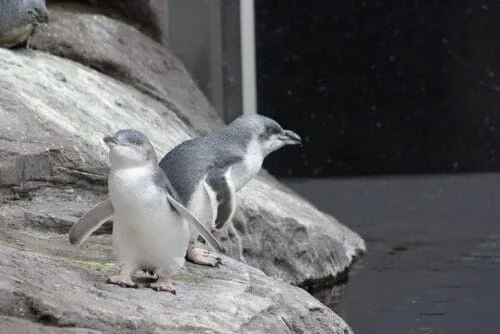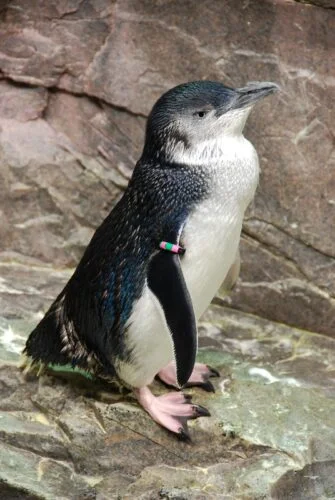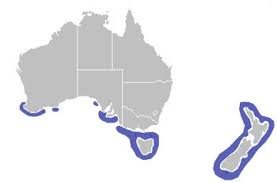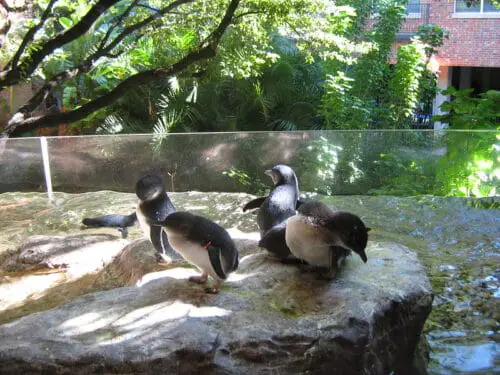Little Blue Penguins, also known as Fairy Penguins or Eudyptula minor, are the smallest species of penguin on our planet. Measuring a mere 13 inches (33 cm) in height and weighing around 2.2 pounds (1 kg), these little guys may be small, but they’re full of personality.

Size and Appearance
One of the most endearing features of the Little Blue Penguin is its distinctive blue coloration. Their feathers range from a gorgeous indigo hue to a stunning slate blue, making them stand out from their black-and-white counterparts.
Their white underbellies provide a striking contrast to their blue feathers, while their beady little eyes give them an adorable, inquisitive look.

Habitat and Distribution: Where to Find the World’s Smallest Penguin
Little Blue Penguins can be found along the coastlines of southern Australia and New Zealand. They prefer rocky shores, nesting in burrows, crevices, or even under man-made structures like beach huts.
During the day, they venture out into the open sea to hunt for food, but they return to their coastal homes at night.
If you’re keen to catch a glimpse of these charming creatures in their natural habitat, there are several locations where you can do so. In Australia, you can visit Phillip Island in Victoria or Manly in New South Wales.
In New Zealand, popular spots include Oamaru, Dunedin, and Akaroa on the South Island. Many of these locations offer guided tours, giving you the chance to witness the penguins’ nightly return to their nests, an event often referred to as the “penguin parade.”

Diet and Hunting: The Smallest Penguin in the sea
Little Blue Penguins are avid hunters and primarily dine on small fish, such as anchovies and sardines, as well as squid and crustaceans. They have incredible diving skills, capable of reaching depths of up to 230 feet (70 meters) while searching for their next meal.
These little guys can hold their breath for up to 2 minutes, making them quite efficient at catching their prey.
Love in Small Packages: Mating and Reproduction
Little Blue Penguins form monogamous pairs, with both parents taking turns incubating their eggs in their cozy burrows. They typically lay two eggs per clutch and have a fascinating system for raising their chicks. One parent stays with the chicks, keeping them warm and safe, while the other goes out to hunt for food. They then switch roles, ensuring that the chicks are always looked after.

Conservation Status: Protecting the Little Blue Penguin Population
While Little Blue Penguins are not currently listed as endangered, their populations face threats from habitat loss, pollution, and predation by introduced predators such as dogs, cats, and rats. Conservation efforts include monitoring populations, protecting nesting sites, and controlling introduced predators. By working together, we can help ensure the survival of these adorable little birds.
Little Blue Penguins: Social Butterflies of the Penguin World
These tiny penguins are quite social creatures. They live in colonies, sometimes numbering in the thousands, and communicate with each other using a variety of vocalizations. They’re known for their unique, high-pitched calls, which some people liken to a donkey’s bray. In fact, in New Zealand, they’re sometimes called “Hoiho,” meaning “noisy” in the Maori language.
Little Blue Penguin Encounters: Ethical Wildlife Tourism
When visiting Little Blue Penguin colonies, it’s crucial to respect their environment and follow any guidelines provided by local wildlife organizations. Keep a safe distance from the penguins, avoid using flash photography, and do not disturb their nesting sites.
By adhering to these rules, you’ll be able to enjoy your penguin encounter without causing unnecessary stress to the animals.
Fun Facts: Little Blue Penguins in Popular Culture
Little Blue Penguins have captured the hearts of people around the world, with their endearing appearance and fascinating behavior. They have been featured in documentaries, children’s books, and even animated film.
In 2011, the movie “Happy Feet Two” introduced the character of Erik, a young Little Blue Penguin who sets off on an adventure in the icy Antarctic.
Conclusion
The Little Blue Penguin is truly a remarkable and enchanting creature. Despite their small size, they are tenacious and resourceful, navigating the challenges of their environment with determination and grace.
By raising awareness about their unique characteristics, habitat, and conservation needs, we can help ensure that these adorable birds continue to thrive for generations to come. So the next time you find yourself near a Little Blue Penguin colony, take a moment to appreciate these tiny wonders of the natural world.
